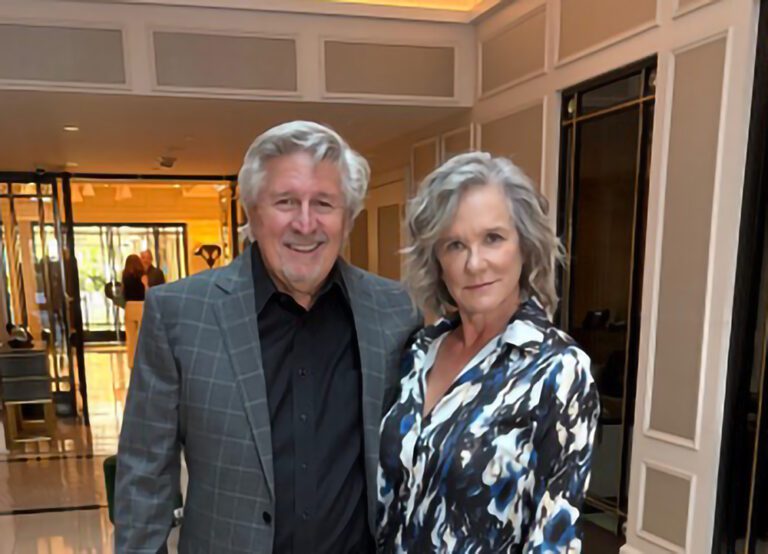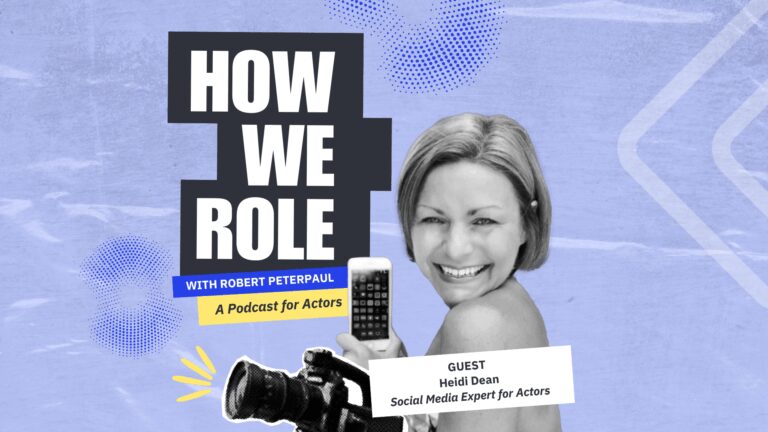Your Bio isn’t just about you. It’s about the role you play in someone else’s story.
Most actor bios are crammed with credits in chronological order, sometimes with adjectives such as “passionate,” “dedicated,” “hard-working.” The issue is that casting directors, producers and industry contacts aren’t just looking for a list of your jobs; they’re looking for a person with a vibe and a fit.
Your bio is not your resume. It’s your brand story. It’s your elevator pitch in paragraph form. It’s the written version of the first impression you’d want to make if you were meeting a director in the coffee line.
If you haven’t looked at your bio in a while, then it’s probably time for an upgrade. In this article, we’ll break down how to write an actor bio that books; one that works just as hard as your headshot and your reel. We’ll focus on branding, storytelling and tone, giving you practical tools (and examples) to craft a bio that not only says who you are, but sells who you are.
What You’ll Find in This Article
- Understand the Job Your Bio Has to Do
- Pick a Tone That Fits Your Brand
- Start Strong
- Weave in Your Brand
- Tell a Micro-Story Instead of Listing Credits
- Adapt for Different Platforms
- Decide: First Person or Third Person?
- Sprinkle Personality Throughout
- Avoid the “Laundry List” Trap
- Use the Power of Keywords
Understand the Job Your Bio Has to Do
Ask yourself: What is the purpose of my actor bio?
It’s not just to “tell people about you.” It’s to:
- Help decision-makers remember you: Bios stick in the mind when they have personality and a point of view.
- Position you in the market: The words you use should signal your type and casting range.
- Build trust and relatability: Industry people are more likely to want to work with someone who feels like a real, approachable human.
- Prompt action: Whether it’s clicking on your reel, following you on Instagram, or calling you in for an audition, your bio should inspire next steps. Otherwise known as a “call to action.”
Think of your bio as a conversion tool — like a trailer for the movie that is your career.
Pick a Tone That Fits Your Brand
Tone is the first thing people pick up from your bio — sometimes even before they finish reading it. A good tone can make you seem approachable, intriguing or trustworthy.
Three tone directions actors often use:
1. Conversational & Quirky
- Best for: Comedic actors, young adult roles, voice-over artists, hosts.
- Example: “Raised in a town so small it didn’t have a stoplight, Jamie learned early that entertainment was the best way to pass the time — especially if it made Grandma laugh so hard she spilled her sweet tea.”
2. Elegant & Polished
- Best for: Dramatic actors, classical theater performers, period piece specialists.
- Example: “With a stage presence described as both commanding and graceful, Elise has portrayed heroines from Shakespeare to Shaw on stages across the country.”
3. Gritty & Grounded
- Best for: Action roles, indie film, intense dramas.
- Example: “Growing up between the steel mills and the railroad tracks, Marcus brings an authenticity to every role that’s been shaped by a lifetime of watching the resilience of real people.”
Pro Tip: Your tone should match your casting energy. If your headshot says “quirky best friend,” but your bio reads like a corporate annual report, you’re sending mixed signals. If you want to get some ideas, read the “Who’s Who in the Cast” in Playbill.
Start Strong
Your first sentence determines whether someone keeps reading. Avoid starting with:
- “So-and-so is an actor from … ” (Too generic)
- “Since childhood, they have loved acting … ” (Cliché)
- A full list of credits (That’s what your resume is for)
Instead, try:
- A quick, vivid image: “When Kai walks on stage, you can feel the temperature in the room change.”
- A statement of style or skill: “Known for blending sharp wit with unshakable sincerity, Aisha thrives in roles that walk the line between comedy and drama.”
- A storytelling hook: “After her first role as a silent ghost in a community theater play, Lena swore two things: she would speak next time — and she would never leave the stage.”
Weave in Your Brand
Your “brand” is the impression people get of you — sometimes instantly from reading your bio, sometimes after watching you work — based on the roles you play and the way you present yourself in the industry. It’s the blend of your type, tone and talent that makes you distinct.
Instead of a generic line like:
- “I am a versatile actor with experience in comedy and drama.”
Paint a picture that shows, rather than tells:
“From a quick-witted barista in an indie rom-com to a sharp-tongued lawyer in a network drama, Jillian brings the same spark of unpredictability that keeps audiences leaning in.”
Brand-check your bio by asking:
- What qualities make you most castable? Do people always mention your warmth, intensity, or razor-sharp comedic timing?
- Are your examples specific enough to spark an image? Instead of saying “various TV shows,” name the genres — like sitcom, crime procedural or sci-fi anthology — so the reader instantly sees your range.
Tell a Micro-Story Instead of Listing Credits
A resume lists facts. A bio curates them into a narrative.
Bad example:
“Recent credits include Law & Order, Wednesday and an indie film currently on the festival circuit.”
Better example:
“Last year, Chris went from chasing criminals on network TV (Law & Order) to being chased himself in the indie thriller Back Alley, which opened to a packed theater at the Tribeca Film Festival.”
Notice how the second version memorably frames the credits.
Adapt for Different Platforms
Your website bio and your Instagram bio should not be the same.
Website Bio:
- Can be longer (150-300 words).
- Gives a fuller picture of your career arc.
- Can be in first or third person.
Social Media Bio:
- Must be short (under 150 characters for Instagram).
- Should focus on one hook: your type or a career highlight.
- Can include a call-to-action (“Watch my latest short →”).
Example:
Website:
“Sam loves telling stories — whether it’s on a stage, in front of a TV camera, or in an indie film. He’s recently been seen recurring on Blue Valley and winning over audiences in the revival of Our Town. When he’s not acting, you’ll find Sam sharing that same passion with young artists, running arts workshops in communities that need them most.”
Instagram:
“Actor | Blue Valley recurring | Coffee = life”
Decide: First Person or Third Person?
Both work, but each sends a different signal.
- First person (“I, me”) feels intimate and personal. Perfect for social media, personal sites, or any platform where you want to come across as approachable.
- Third person (“he, she, they”) feels more formal and is often used in programs, press releases and professional directories.
Pro Tip: When using the third person, write as if someone else who knows and respects you is doing so — keep in mind that the professional reading it likely knows you wrote it.
Sprinkle Personality Throughout
You don’t have to turn your bio into a stand-up set, but a touch of personality makes you memorable.
Instead of:
“In his spare time, Michael enjoys hiking and cooking.”
Try:
“When Michael isn’t on set, you can find him trying (and failing) to convince his sourdough starter to behave, or hiking trails that are always steeper than advertised.”
These little details don’t distract from your credits — they humanize you.
Avoid the “Laundry List” Trap
One of the fastest ways to make your bio unreadable is to list every credit, training program, and award in one paragraph.
Instead, group and summarize:
- “Her television work includes guest roles on hit procedurals and recurring appearances in streaming dramas.”
- “Trained at both the Lee Strasberg Theatre & Film Institute and NYU, she blends classical technique with sharp comedic instincts.”
This way, you keep the bio flowing while still showing range.
Use the Power of Keywords
Use keywords that describe your type, genres and skill set — because online bios are searchable.
If you’re known for sci-fi, action roles or improv, include those words naturally.
- Bad: “I am a sci-fi, action, improv actor.”
- Better: “With a knack for high-energy performances, from the improvisational chaos of sketch comedy to the adrenaline of action-packed sci-fi, Jay thrives when the stakes are sky-high.”
As your career shifts, your bio should, too. It’s a small, but mighty part of your professional tool kit. You’re showing people why they should picture you in their story. And that’s the kind of bio that books jobs.
Final Takeaways
An actor’s bio is far more than a list of credits — it’s your chance to make a memorable first impression that fits the story casting directors want to tell.
Your bio should capture your unique vibe, showcase your brand, and invite industry professionals to see you in a role they’re casting. Here’s how to craft a bio that works as hard as your headshot and reel to get you noticed.
- Nail your bio’s purpose. Make it memorable, market your type, build trust, and include a call to action.
- Choose a tone that matches your casting energy — whether it’s quirky, polished or gritty — to send clear signals.
- Start with a vivid image, a bold statement, or a storytelling hook instead of generic intros or credit dumps.
- Show your brand through specific examples that paint a picture of your range and strengths.
- Keep your bio adaptable. Write longer for websites, shorter and punchier for social media and choose first or third person based on context.
You may also like:













